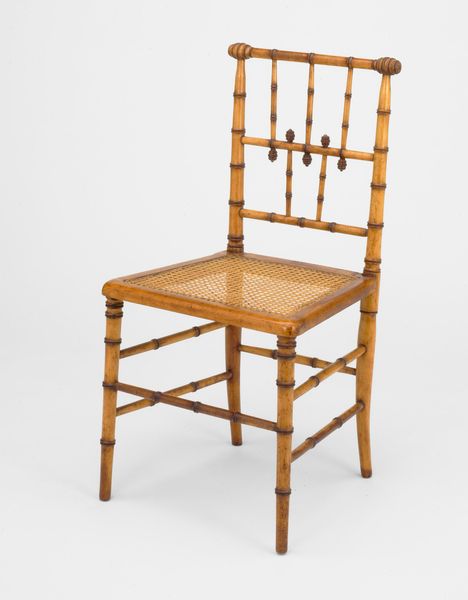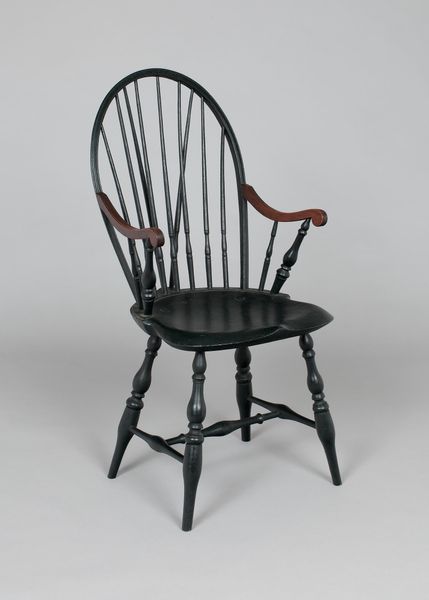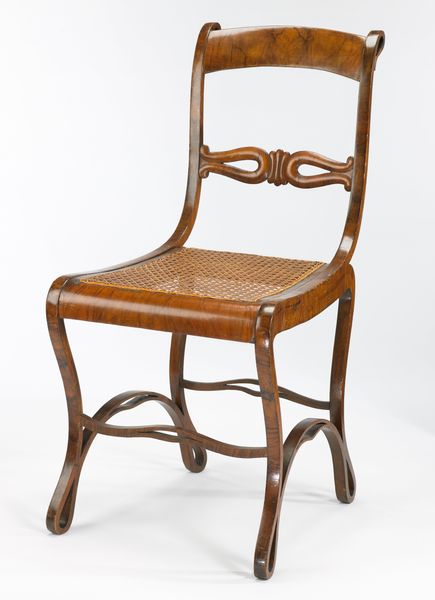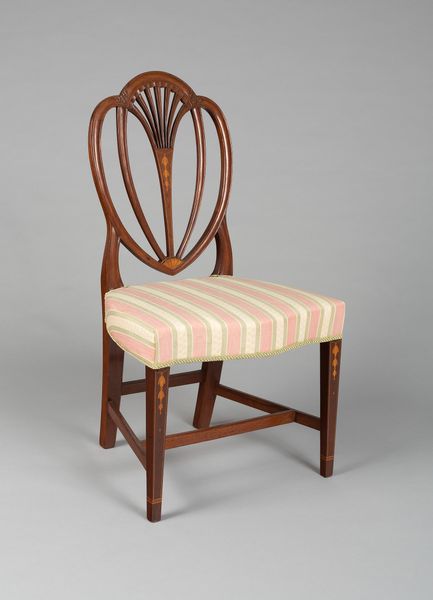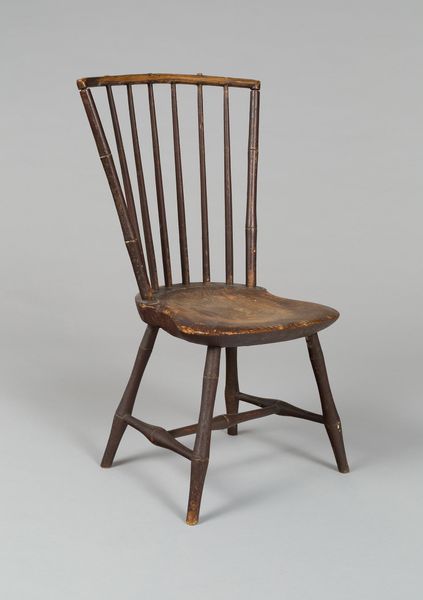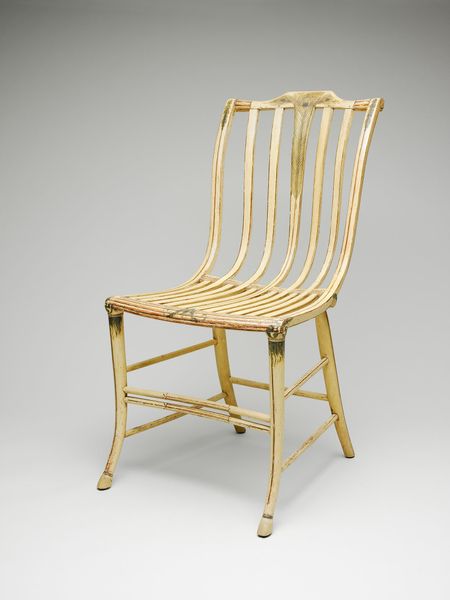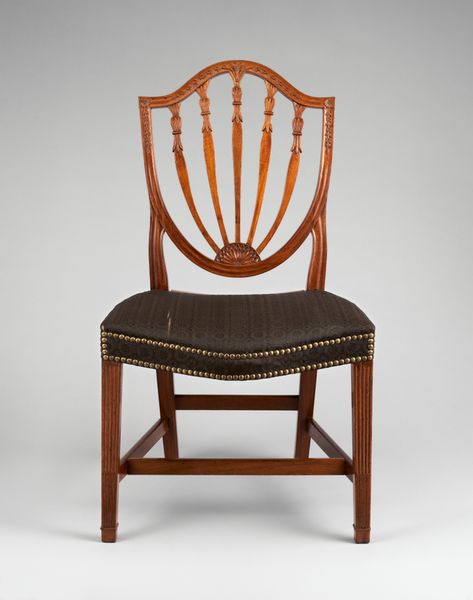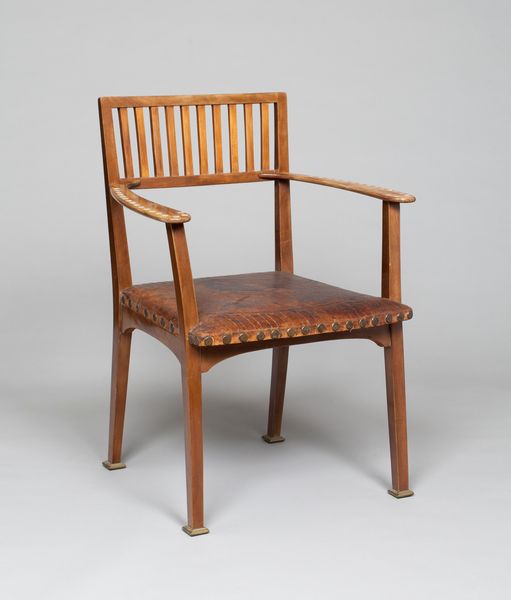
mixed-media, carving, wood
#
mixed-media
#
carving
#
furniture
#
romanticism
#
united-states
#
wood
#
decorative-art
Dimensions: 45 x 20 3/4 x 27 in. (114.3 x 52.7 x 68.6 cm)
Copyright: Public Domain
Curator: This captivating piece before us, “Rocking Chair,” was crafted circa 1820-1823. We attribute this intriguing object to Hudson and Brooks. It resides here at the Metropolitan Museum of Art. Editor: Well, my immediate impression is a certain delicate awkwardness. The lines are so straight, yet it wants to convey comfort, a sort of rustic refinement perhaps? Curator: Indeed. Examining the object closely, one can detect a fusion of materials: primarily wood with mixed-media elements. The structure depends on meticulously executed carvings. Note also, the curious trompe l'oeil bamboo effect achieved by the painted lines and how that sits against the grain of the wood. Editor: Precisely. The aesthetic implications speak volumes. In an era rapidly transforming due to industrialization, simulating bamboo in paint served as a symbolic tie back to nature, evoking a sense of idyllic retreat even while the owner might have occupied an increasingly industrialized urban world. We have here, not merely a chair, but an artifact deeply entwined with the burgeoning identity of America. Curator: Absolutely, this piece falls neatly within the American Romanticism aesthetic. Decorative arts of this period, and this particular seat exemplifies it well, often utilized motifs of nature and idyllic scenes. Observe the painted detailing around the crest rail and seat panel itself. Editor: To my mind, these choices were never arbitrary, particularly for a household piece with significant practical, even therapeutic value, as the Rocking Chair became, specifically, in the American home. Was the intent, with that golden color and the decorative motifs, to suggest nature tamed or perhaps a return to an imagined agrarian past, even a resistance against encroaching modernity? Curator: A potent point, and one that warrants contemplation. The chair's form presents a curious tension between simplicity of function and ornamentation. Did these designs enhance its purpose, its psychological impact, or were they purely aesthetic flourishes, attempting to refine and elevate everyday existence during this period of dramatic shifts? Editor: As we stand here, facing “Rocking Chair,” I'm reminded of how a seemingly commonplace object is anything but, resonating with its original cultural milieu, an era where identity, progress, and memory coalesced around objects within the intimate space of the home. Curator: Yes, this exploration allows one to appreciate the confluence of formal elegance and material storytelling in 19th-century American artistry. It causes you to see the artistic depth that furniture can encompass.
Comments
No comments
Be the first to comment and join the conversation on the ultimate creative platform.

